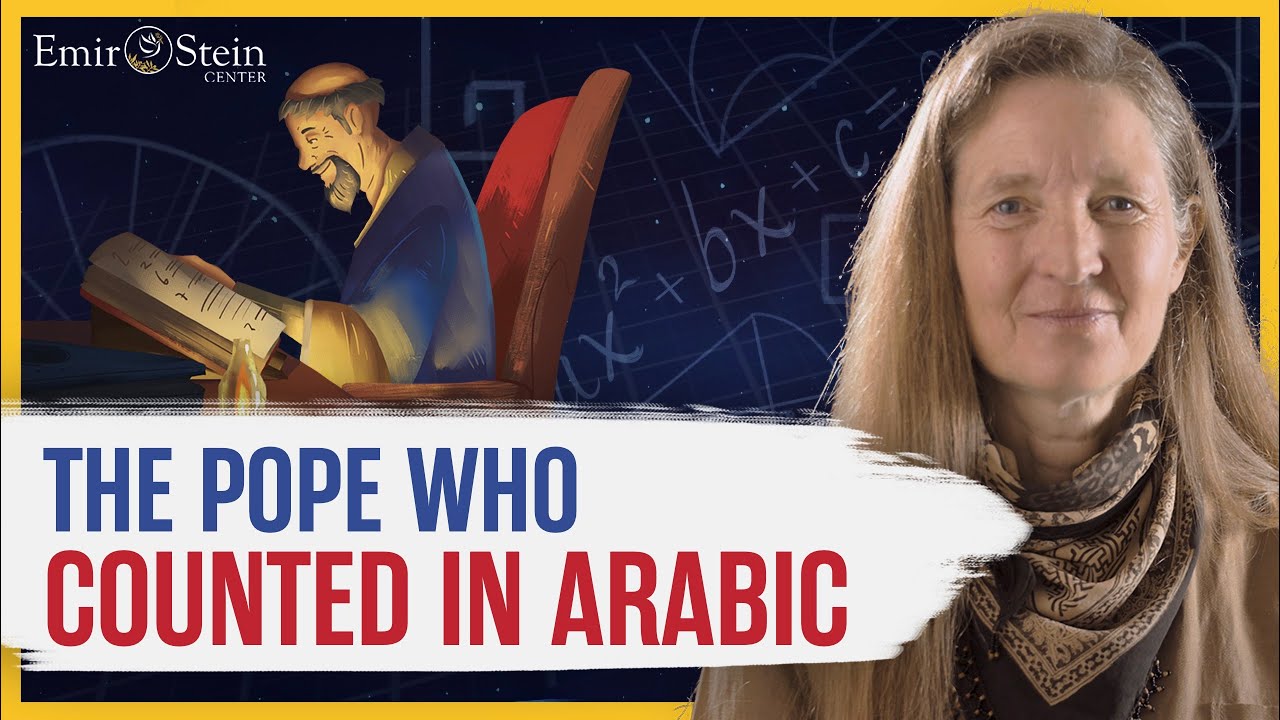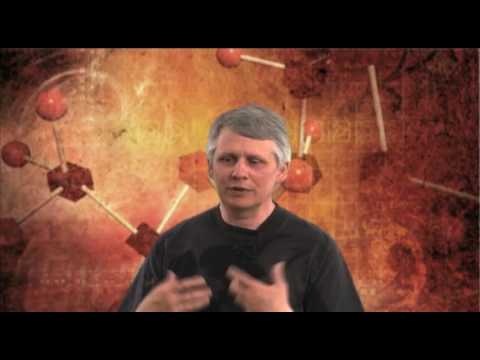Emir-Stein Center
CC: 🇺🇸 🇪🇸 🇫🇷 🇵🇹 🇩🇪 🇹🇷 عربي
Did you know that the Pope in the year 1000 was the leading mathematician and astronomer of his day? Did you also know that he was the first mathematician in the Christian West known to use Arabic numerals? In this video, Nancy Marie Brown, author of The Abacus and the Cross: The Story of the Pope Who Brought the Light of Science to the Dark Ages, explores a parallel universe, an alternate history of the Middle Ages, in which science was central to the lives of caliphs, bishops, kings, and even popes.
Enrich your library by getting Nancy’ book: https://amzn.to/3oIfQQe
Follow us on social media:
Facebook: https://www.facebook.com/EmirSteinCenter
Twitter: https://twitter.com/EmirSteinCenter
Instagram: https://www.instagram.com/emirsteincenter
Website: http://www.emir-stein.org
The Scientist Pope:
I was introduced to The Scientist Pope through an act of grace. Writing a book about an adventurous Viking woman, I made an imaginary pilgrimage to Rome just after the year 1000. Wondering which pope Gudrid the Far-Traveler may have met, I discovered Gerbert of Aurillac, who served as Pope Sylvester II from 999 to 1003.
I was astonished. Nothing in my years of reading about the Middle Ages had led me to suspect that the pope in the year 1000 was the leading mathematician and astronomer of his day.
Nor was his science just a sidelight. According to a chronicler who knew him, he rose from humble beginnings to the highest office in the Christian Church “on account of his scientific knowledge.”
I felt as if I had stumbled into a parallel universe, an alternate history of the Middle Ages. So I began writing another book, to share the story of The Scientist Pope.
A professor at a cathedral school in France for most of his career, Gerbert of Aurillac was the first Christian known to teach math using Arabic numerals.
He devised an abacus, or counting board, that mimics the algorithms we use today for adding, subtracting, multiplying, and dividing. It has been called the first computer.
Gerbert made sighting tubes to observe the stars and constructed globes on which their positions were recorded relative to lines of celestial longitude and latitude.
He (or perhaps his best student) wrote a handbook on the astrolabe, an instrument for telling time and making measurements by the sun or stars. You could even use it to calculate the circumference of the earth, which Gerbert knew very well was not flat like a disc but round like an apple.
All of this science Gerbert learned as a youth living on the border of Islamic Spain—then an extraordinarily tolerant culture in which learning was prized.
In the caliph’s library in Cordoba were 40,000 books; Gerbert’s French monastery owned fewer than 400. Many of the caliph’s books came from Baghdad, known for its House of Wisdom, where for 200 years works of mathematics, astronomy, physics, and medicine had been translated from Greek and Persian and Hindu and further developed by Islamic scholars.
In the world Gerbert knew, Arabic was the language of science. Much of what Gerbert taught at his cathedral school in France, for example, was derived from the works of Muhammad ibn Musa al-Khwarizmi, a Persian scientist in Baghdad’s House of Wisdom.
In the early 800s, al-Khwarizmi wrote a book on what we call Arabic numerals: He named it “On Indian Calculation,” well aware that the symbols 1 to 9, and the place-value system that makes arithmetic easy, originally came from India.
Modern algebra comes from a second book by al-Khwarizmi: You can thank him for quadratic equations. Al-Khwarizmi’s own name gives us the word algorithm, without which no computer scientist could function.
His third book is a set of star tables, in which he uses trigonometry, spherical astronomy, and other advanced math to calculate the changing positions in the heavens of the planets, sun, and moon.
Finally, al-Khwarizmi wrote a treatise on the astrolabe, which was the most important scientific instrument until Galileo invented the telescope in the 17th century.
Al-Khwarizmi’s books quickly reached Islamic Spain—perhaps even before his death in about 850. There, during Gerbert’s lifetime, a hundred years later, Al-Khwarizmi’s algebra and his treatise on the astrolabe were among the science books translated from Arabic into Latin through the combined efforts of Muslim, Jewish, and Christian scholars.
Many of these scholars were churchmen, and some of them became Gerbert’s lifelong friends. One of these is Miro Bonfill, the Bishop of Girona. In one of Miro’s books, he writes, “What follows now has been translated by the wisest scholar among the Arabs, as he was instructing me.”
…
Source




Al-Khwarizimi was an Uzbek not Persian. Algorismus was the latinized form of his name from which we derive algebra and algorithm. Nancy mispronunciation his name even in Englidhñ
I'm a proud Persian Muslim
Thank you so much, you have a golden heart Nancy, a very good effort for the interfaith harmony. Salam from Pakistan.
Allah bless u emir stein center for ur efforts of producing inter religious harmony….
Thanks for the wonderful video
Nice to see …
I love you guys please consider me one of you….
Wonderful content
madam your channel doing very good work. madam your channel spread love that is the very best thing in christian.
I've got a good feeling about this channel. The balanced coverage of both Christianity and Islam makes me hope for a better future.
Andalusia or spain? lol
That mean islam is the Right
Relgion
Amazing 😉
Subtitle indo,
I will put this video in the favorite list
This YouTube channel is very fantastic,,,,,
We Muslim believe in jissu ,,,he was a prophet ,,,,,
But when people did fully change ingil ,I mean bibel ,,,,,and people were getting darkness ,,
Allah send Muhammad sallallahu alaihi wasallam with a new religious Islam and religious book Al Quran ,,,,
so sad most muslims dont know of their history just like me
These videos deserves more views.
I never know that Al-Khwarizmi influence really reach that far in Christian world, we DID learn something new every day
@Emir-Stein Center better to produce every each video in english, arabic and other languages in separate videos
Allahu Akbar, may Allah bless you all and my praying to Allah for supporting you to follow the right way to paradise, and avoiding fire of the lastlife by follow Islam and being muslim only for Allah "the one god" between you and Allah only
This is so beautiful. I almost cried. Their passion for learning and innovation is what brought them together. Their contribution is priceless.
❤️❤️❤️
This is beautiful… I got goosebumps watching this!
Ah, the science made in the middle east..
Both the libraries of Alexandria and the House of Wisdom were there..
Both of them turned to ashes..
Sad..
Beautiful video though..
3:55
Thank is too specific as a word, I would only congratulate him
I saw that there 1 hate comment that said : "man i hope islam doesn't exist" i mean like bruhh if islam doesnt exist theres no technology like we saw now. Thanks all to alkhuwarizmi…
I don’t get this who are those 7 folks who disliked this SMH
I'm a subscriber from Philippines💕💞💕💞💕
You are doing great work at a difficult time on our world. Keep going and try to promote you YouTube channel because there is a lot of people who don’t know that this channel d
Can I hug you…. You are spreading LOVE and Knowledge and and awareness. My prayers are with you.